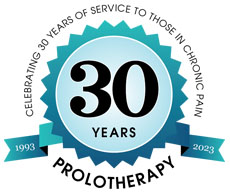A cortisone injection is a conventional treatment for joint pain. But did you know that receiving a cortisone shot is one of the quickest ways to weaken your joint? Cortisone and other steroid injections increase the arthritic rate and have detrimental effects on articular cartilage. Yes, that is correct! Corticosteroids, such as cortisone and prednisone, have adverse effects on joint healing. Corticosteroids inactivate vitamin D, which limits calcium absorption. They also inhibit the release of growth hormones and chondrocytes, the cells that make articular cartilage, which further decreases the ability of the joint to repair. Ultimately, corticosteroids lead to an overall decrease in bone, ligament, and tendon strength. The result is a weakened joint which perpetuates the cycle of increased joint pain and recommendation for more cortisone. Though these injections have played a huge role in pain management, their use should be limited. It is true that steroid injections may reduce pain, but they do so at the cost of destroying tissue. Studies show that that even after one steroid injection, cartilage remains impaired.
Unfortunately, many people suffering from chronic pain look for quick relief without thinking about the long-term side effects that could occur. For example, athletes often receive cortisone shots in order to continue to play. They then go onto the playing field with their injuries. Because they feel no pain, they play as if the injury does not exist. The athlete is, therefore, causing further injury by playing beyond what the joint is safely capable of handling. The same goes for non-athletes who are just trying to stop the pain in order to perform daily activities. The alternative to cortisone is regenerative injection therapy, like PRP or Prolotherapy, which is the opposite of cortisone and make more sense for most chronic pain conditions.



